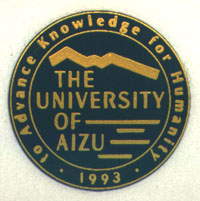|
As museums and
educators struggle with the challenges of presenting their material in
a digital format, many overlook the application that has spearheaded the
development of virtual reality for the average consumer: 3D realtime game
engines. We are using a modified version of the Quake game engine, released
by Id Software under the GPL license. While a game engine has drawbacks
in terms of supporting limited platforms and requiring users to download
a piece of software, these limitations are more than balanced out by the
speed, realism, and overall versatility offered by such a solution. Under
GPL, any historical or educational game created with the Quake engine
can be given away for free or sold for a profit, providing only that the
source code is made available to the public. For museums, this should
not be a significant concern.
At the University
of Aizu, we are using the Quake engine in conjunction with the Povray
raytracing engine to attack the problem of historical visualization from
two sides. Our test case is a model of Enichiji temple, from the Aizu
region of northern Japan. In order to provide an immersive environment,
we have created a model of this temple which runs in Quake, and allows
the "player" to climb the stairs, inspect the internal architecture, and
walk around the temple in full realtime. Furthermore, to overcome the
unavoidable limitations imposed on the complexity of a model rendered
in realtime, we have added an additional feature. From inside the game,
the "player" may at any point choose a scene to be viewed in greater detail.
Using povray, a much more complex model of the chosen scene is rendered,
creating still images or animation to be viewed in a separate window.
This presentation
will describe the work in detail, including problems and solutions we
have discovered along the way, and conclude with suggestions for how this
work could assist others in the field of historical simulation and modeling.
|
